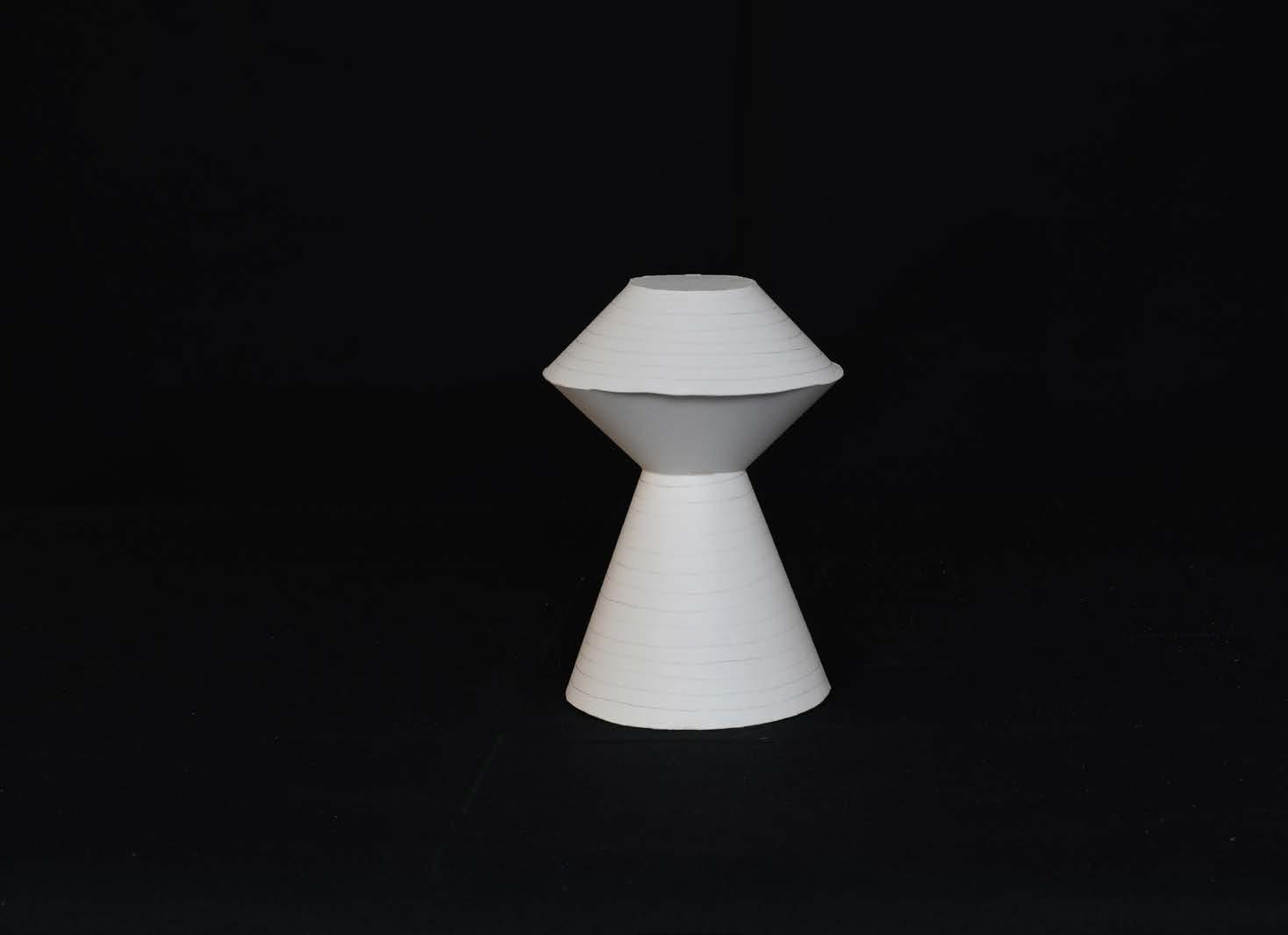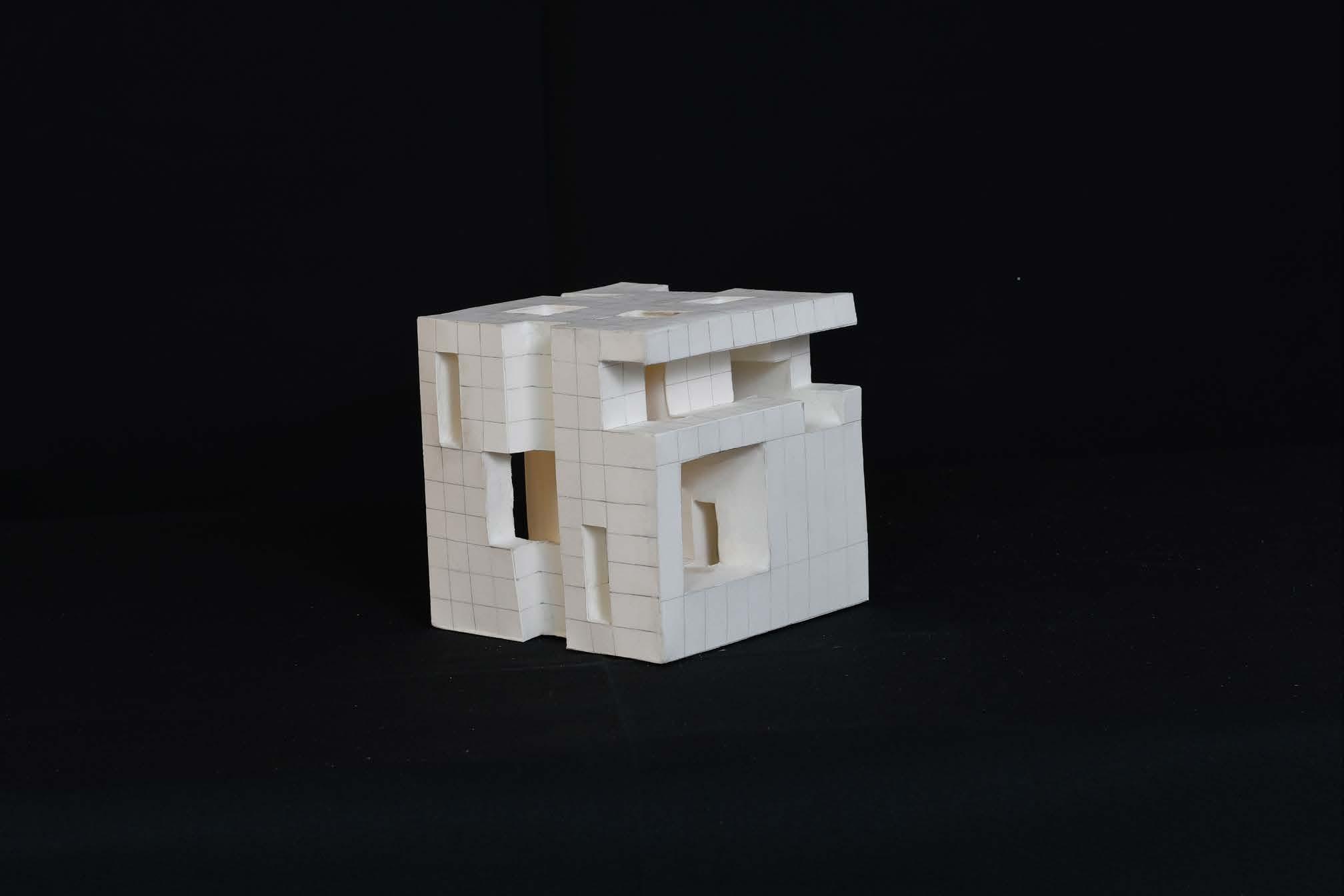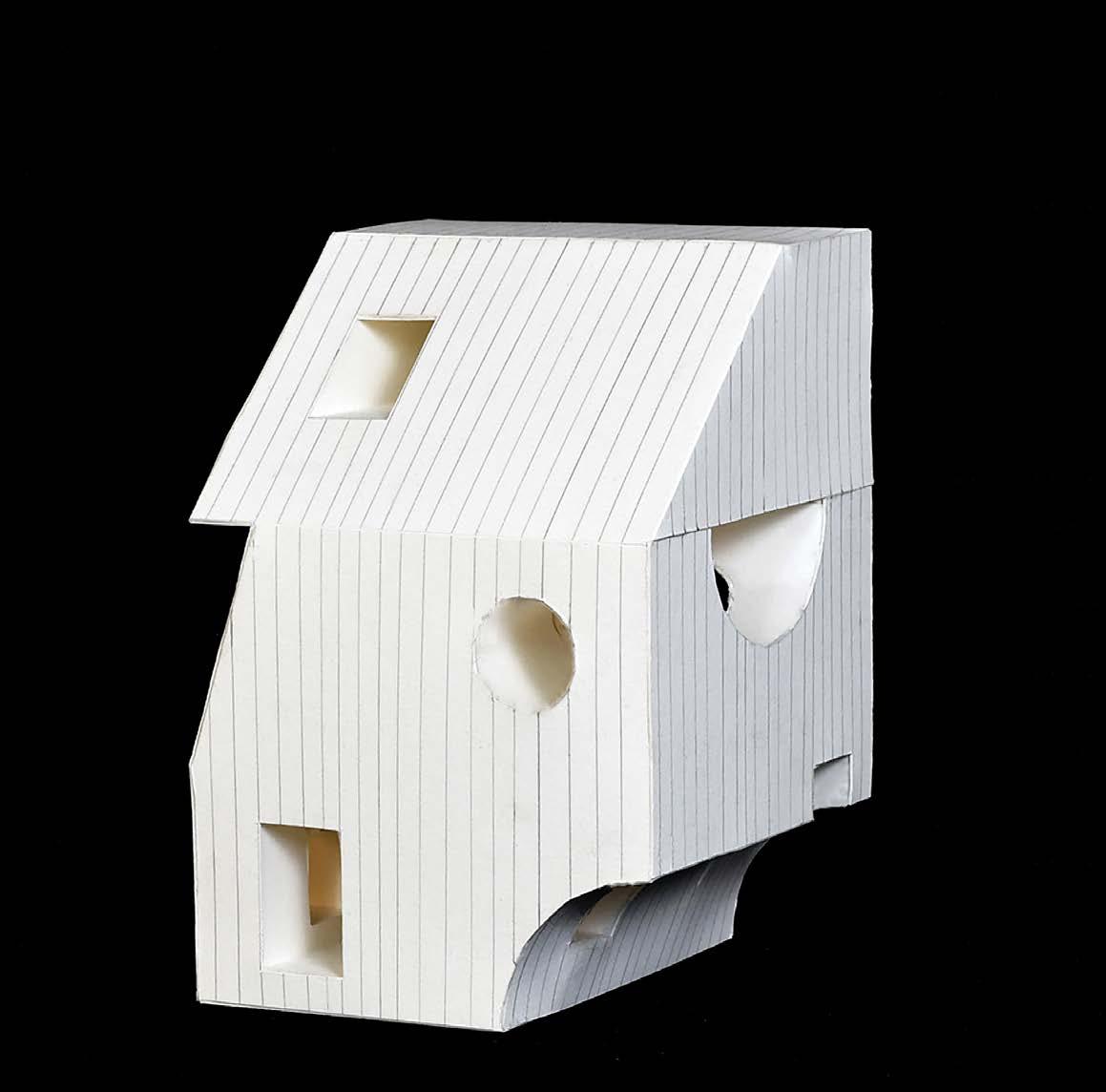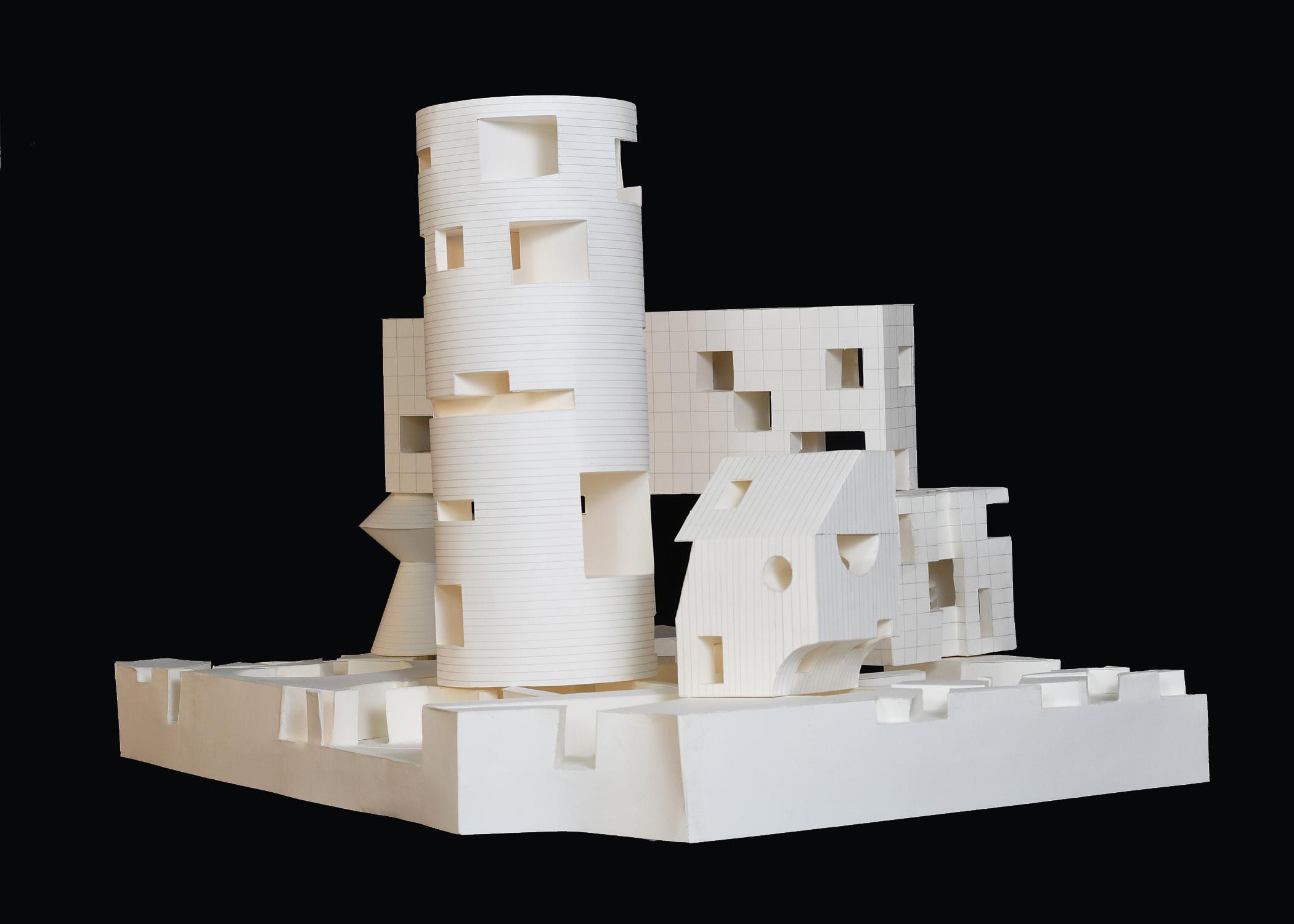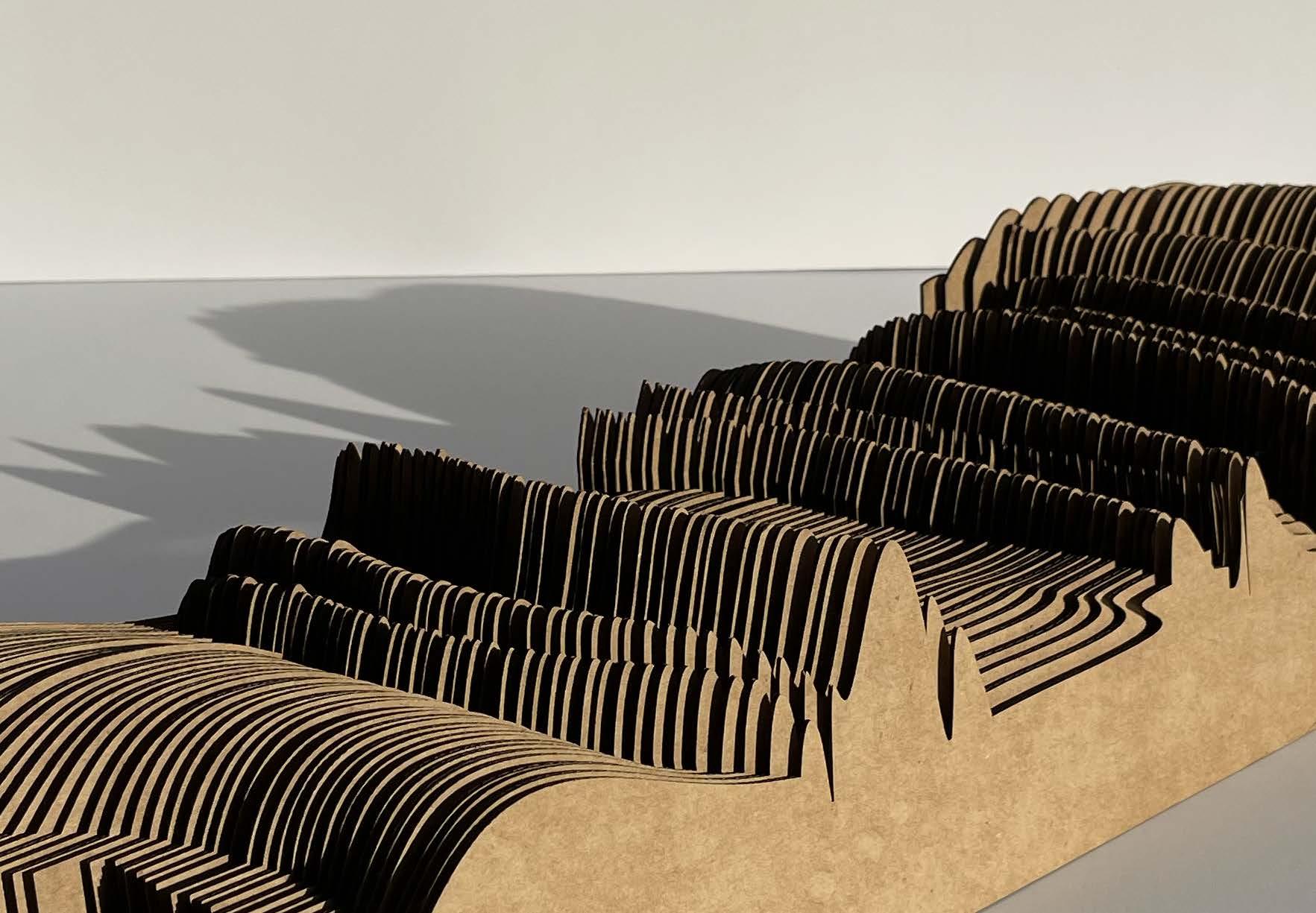
1 minute read
A Collection of Objects
Portraits of Architectural Form, Order, and Representation
Five objects were designed using a variety of techniques including stacking and stamping, developable revolved objects, and spherical envelopes. The objects were compositionally placed on a field condition with the goal of having all five objects designed and represented through elevation and axonometric drawings. These Objects were then physically built out of museum board.
Advertisement
Field Condition
The field condition is a matrix that unifys diverse elements while maintaining the identity of each part. This was created by taking repeating elements and manipulating them to create a balanced aggregation and part to whole relationships.
2D field drawings created utilizing a variety of compositional approaches and then translated into a single composition with material thickness.
Objects
Five objects were designed to rest on of top of their field condition model. Characters were created based on plan and elevation part-to-whole relationships with composition and placement in mind.
Working through the study of subtractive and additive modeling techniques in Rhino. Five specific techniques were employed:
1. Grids to volume
2. Developable revolved object
3. Spherical Envelope
4. Top, Middle, Bottom Characters
5. Primitive Shape Modeling
Grids to volume
Developable revolved object
Primitive Shape
Spherical Envelope Shape Modeling
Primitive Shape Modeling
